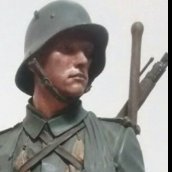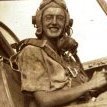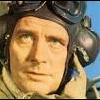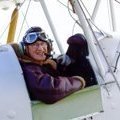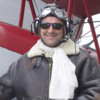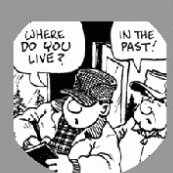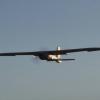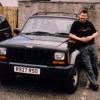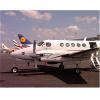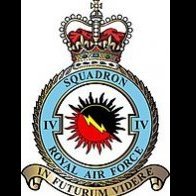Leaderboard
Popular Content
Showing content with the highest reputation on 19/11/17 in all areas
-
Hello, fresh from my desk: Eduards new Fw 190 A-4 in JG 1 markings. This aircraft was flown by Lt. Eberhard Burath of I./JG 1 in April 1943. Eduard will offer this markings in their new Royal Class edition of this great kit26 points
-
Hello everyone, old model of LS representing one of the P-3M (M -> Modernized) that has the Spanish Air Force (Ejercito del Aire) and that deploys along with other armed forces in the Indian Ocean in the Operation Atalanta against piracy. Primed with Mr.Surfacer 1200 and painted with Mr. Color acrylics, details with Vallejo acrylics and some weathering with oils, enamels and watercolor pencils, some homemade decals, final varnish with Marabú satin lacquer. I hope you like it. Best regards.22 points
-
Hi This is another one for this year even if I started this kit many years ago. The 1/72 Hobby Boss kit is not the best in town but is easy to build except around the front part of the fuselage which is divided horizontally. I tried to compensate the poor detail level by chosing a multi-coloured scheme. This is the Armée de l'air (French Air Force) Republic F-84G-21-RE 51-10809 Thunderjet transfered to France and from EC 1/3 Navarre at Reims AB in 1953. The transfers came from the Hi-Decal HD72049 sheet. Patrick13 points
-
My first vacuform kit. Definitely not perfect--the camera sure brings out the flaws--but so much fun to build. This is the old Falcon kit. Scratchbuilt flaps, gear, wheel wells, and cockpit. Ejection seat came with the kit and, surprisingly, the kit decals worked (although I had to make the arrows on the fuselage out of red decal sheet. Finished with Tamiya acrylics. Not a contest winner by any stretch of the imagination, but I'm happy to have finished it and have even more respect for those who can really make limited run vac kits shine.13 points
-
Hi, Here's my latest: Revell 1/48 Tornado with HaHen decals for a MFG1 bird. It's straight from the box, with Mr Paint paints and Pebeo acrylic matt varnish. Hope you like it, S.12 points
-
Protective clothing is available. You have noooo idea how close that came to starting a lamentable and entirely predictable series of flatfish puns.... Thankfully this isn't that kind of thread. Oh wait. I stand corrected: Normal service is now resumed I see: Fred von Jupiter? That first video of them that Benedikt posted above is absolutely superb! They're like a world-weary Bananarama late at night in a Weimar-themed arts centre in Scunthorpe. In a positive way. Most hummable and a style of dancing I can relate to. Cometh the tool, cometh the - no wait. that's just so totally like going to be misinterpreted girlfriend. Forget. I mentioned it Ced. The Sabbath then began merely as a small tidying-up operation that developed some serious mission creep. Compared to plan views of the aircraft in the manuals, the gondola rear needs to extend backwards a couple of millimtres in order to provide better clearance for the rear propellor. A 6mm disc punched out of 2mm plasticard was added and will be smoothed into the countours later on: In a similar fashion, discs were also added at the base of each propellor as well as the kit doesn't extend the spinners back far enough behind the barrel mountings: Those features too will have some filling and smoothing later. I'm growing increasingly enamoured with the material qualities of 24hr epoxy (ta for switching me on to this Bill!) bot in terms of bond-strength but also the way you can carve back into it. To this end it was a natural choice to reinstate and strengthen the rear parts of the propellor blades where they were drilled out previously and were lacking also a little in diameter as a result: Those should sand back now to a nice round (strong!) cylindrical shape once cured. This is an example of the epoxy carved back flush on the underside of one of the hebel mountings for the starboard wing: That should need very little filler to make good there, and should do a decent job on the blades likewise: That should have been it for today really but I had a bee in my bonnet about making some more progress on the variouws attachments for the hinges and actuators on the wings due to the large number of parts involved. To this end I marked out a 6mm recess back from the trailing edge and extended the existing kit insets to a more accurate depth with Dexter: There are six of those cuts to each wing. My initial plan for thse control surfaces was to make the actuators we'd started work on yesterday out of brass (to act as the main load-bearing components) for flaps and ailerons, and to build these hinges today out of plastic. A brief perusal of the Evergreen collection was enough however to dissuade me from such folly. Metal for sharpness of definition at this scale. Has to be. Whilst I've yet to access the brass equivalent of Slater's microstrip9does such a thing exist?) I do have a sheet of 0.3mm brass, so a strip of about 1.2mm width was cut-off with scissors, producing this lovely brass ringlet: Hmm. I need straight bits though. After roughly straightening this between flatheaded pliers in various dimensions I wrassled it down to this: And after the earth had rotated a little further, managed to extract some straight 6mm long brass lengths: Everything today is coming in 6mm intervals. Did Dornier use occult ratios in their designs? These components are to form the wing-side of the hinges like so: Twelve of the blighters - count 'em! Gluing them into place (with CA) was oddly therapeutic however: The next stage is to make them more secure with some - you guessed it - blobs of Araldite on the undersides, but that will wait until the week as family time beckons now. Hope you've enjoyed progress over the last few days. Tony12 points
-
Hi all Second one finished in last month (started long time ago.....), cheap, easy but at the end good representation of MIG 15 UTI, well known model from Hobby Boss easy range. There are few points which really need to be reworked, air intake must be cleared form pins connecting two halves very visible from outside, After trimming that, looks much better. Also added details in cockpit which is totally empty....and that is all. Good model for work, Humbrol collors, Gunze varnish, very moderate weathering with Tamiya panel line colors. And that is all, i hope you like it Best regards to all11 points
-
Hi folks So, back at the bench after the tumultuous week that was Telford Thanks again to everyone for saying hello & offering congrats - I still can't believe I won best in show Moving on, I had a waver at the show thinking maybe the Firefly was maybe too ambitious and talking to Mirek from HpH I was thinking maybe do another of their kits instead as I like the polished metal effect and that scheme simply does noit exist on a Firefly - that soon passed, and pleased to say I am now back focussed and cracking on ..first up, I decided to get to an airfame so I can wallow in the detail further down the line - I learned on my Spit that doing things out of order is tricky as I spent a long time protecting work I had already done, so in this case I want wings... ..started with the root aerofoil section in brass to act as a template - just scaled it and stuck it to some sheet,... ..cut them out with a slitting disc and put both together to get a consistent shape - always work in pairs when doing this sort of thing... ..then made a paper template to find the right position to sit accross the spars - I got this wrong and it needed some reworking after - I use scaled photo's & plans to make sure the position & incidence is right.. ..also soldered in the plates that will support the main gear - this was done as you see it so the position of the slide in wing spars is perfect.. ..then traced two wing blanks onto 3mm plastic card - again as a pair - I ended up cutting off the radiator sections afterwards.. ..these were then carefully positioned & marked out on the plan so I could let them into the wing spars.. - also cut away the trailing edge at the flap so I could insert brass sheet for a nice sharp trailing edge.. ..soon had two slide on wings ..added aerofoil sections - seen with the black outline... ..and these now are a good tight fit and sit well against the plan.. ..next I will sheath in balsa before adding wood hardener and shaping down to the aerofoil sections.. back soon TTFN Peter11 points
-
Back from the travels again. Oh what fun we had on this trip. We managed to pick a hotel that was undergoing renovations but omitted to display such information on the web site... Look out Hilton, you have a nastygram coming! My room wasn't bad, however one of my travel buddies had a rather more interesting time of things. His floor had just been finished and released back to public use, but it appeared they had been in a little bit of a hurry when it came to putting the doors back on the rooms. (you can see this coming can't you?) The doors were back on oh yes, but not necessarily back on the same room! It took them about three hours to sort it out - resolved only by programming a set of keys for every room on the floor and sending the engineers out on a scouting mission to navigate the door fiasco and figure out which room had which door lock. Oh how we laughed. Well, two if us did - the third wasn't quite so joyous. Anyhoos, back to reality... I just spent ages looking at this photo trying to remember why I took it and what it showed... eventually it came to me - The rear console! 'doh! The kit part sits directly on the no longer a floor part, and is square at the bottom, so out with the files and I started to shape the bottom end into a slope which will hopefully at some point meet up with the cabin forward bulkhead. I also took the plunge and glued in the fwd bulkhead and the cockpit floor. That was a bit of a leap of faith for me - the lack of location features continues to frustrate me. Though I use the term glued in rather loosely. It does touch the inside of the fuselage briefly and in an occasional way, though more of a fleeting, in passing kind of way. With the cabin bulkhead and the cockpit floor in place there are only three small areas where they all contact. Methinks that some support blocks will be coming into play. I made the small cover panel that sits at the front of the cabin - I have no idea what this is for - probably a locker for the loadies sandwiches. The panel was made from .005 brass sheet, and a block of styrene glued behind it. That has since gone off to the paint shop and has also had a handle fitted. While Fly have done some good things with this release, they have also made some real gaffs in my opinion. For instance, take a look at the fuel points in this photo. Neither of them bear any resemblance to the real thing. Something has to be done here, so I drilled out the openings Then added the strengthening panels. Also just visible up the front end is the front earthing connection which was made from brass tube. (the rear hasn't been done yet) Once the glue had fully cured I set about opening up the fuel access point with a round file Once that was completed, I went to add a backing piece inside the fuselage and found that the depth through the kit was too great. That resulted in me digging out the rear with a chisel. And in a moment of carelessness, or maybe frustration, I popped the chisel right through the front. Angry I was!!! I've repaired it as best I can but need to wait for the glue curing before I can do any more. I'll squirt some primer on it tomorrow to see just what kind of mess I'm dealing with. So while I was cursing myself for such carelessness, I started making up the fuel filler cap from the following recipe: 2 x styrene discs, 1 x flattened lead wire, and 1 x small section of styrene rod. Simply add glue to taste, then stir well. And a quick dry fit. There's still some more work to do here - particularly after my stuff-up, but it's still way better than the kit offering. And once it's all painted black, you'll never notice any of the detail anyway! Something that went a little better - for a little while at least - was the seats. Two bracing rods were added, then I used the 1-2-3 block as a support for the legs while I soldered them in place using the Tix low temp solder. (which is an absolute pleasure to use I might add) When it came to a dry fit I discovered that I had one leg slightly out of place, but nothing too drastic. I still haven't decided whether to remove it and refit or just leave as is. Of more concern is the seat height. I have followed the dimensions of the kit for the seat but I'm not sure if it is too low ? At least, that was my first thought, though the more I look at the photo below, the more I am beginning to think that the height is okay. Thoughts ?11 points
-
Hi lads. As the winter coming soon I have a another one in the winter coat. This time is the dark side one. As usually I've used the metal barrels and metal tracks. Figures are from Miniart. Hope you enjoy it.10 points
-
High Folks, My recent built, HobbyBoss 1:72 Hawker SeaHawk. One of the aircraft that gave a hard to the Pakistan forces during 1971 war in the east was the hawker Seahawk, what a beautiful aircraft, had a glorious service with the Indian Navy and served it proudly. The kit is hobby boss, good kit much better than Airfix one, just tad expensive and Indian is spelt as INIDIAN. Hope it turned out ok. cheers.10 points
-
When I first joined BritModeller, a little over a year ago, the first model that I posted in RFI was an Israeli M51. At that time I had a few problems with posting photos from a hosting site (nothing to do with Photo Bucket, more to do with my incompetence). When I tried to upload the photos (from Village Photos), all that appeared were links. I didn't know what the problem was (I still don't), but it's not occurred since, so I thought that it might be an idea to post the photos again now and hope for better success. So apologies for doing this twice, but here goes. First, a brief run down of how the model was built. The tank that I depicted was what was referred to as a Batch 4 model. Batch 4 M51s were the last ones produced by the Israelis. In 1/35th scale, there are three M51s produced by Dragon, Academy and Tamiya. The first two have got their problems, not least of which is the grossly oversized muzzle brake. The Tamiya kit is a beauty, but it is of a Batch 1 version, but as it is by far and away the best “51”, I used the Tamiya kit a the basis for this build. Without going into a WIP, the conversion consisted of the following; Rear upper hull sliced off of the Academy kit and attached to the Tamiya hull to give an increase in length of 5mm. Extra louvre added underneath. Dragon diesel engine deck added in place of the Tamiya radial engine deck, along with the main gun travel lock from the Academy kit. Extra stowage bins each side made from card and etched brass. Rear stowage bin from the Academy kit. Raised serial numbers (Academy) front and rear. Turret weld lines beefed up with Milliput (beefed up a bit too much!!) Extra turret bin on rhs from card. All of the jerry can holders were replaced with ones from Eduard etched brass. The headlamp lenses are Little Cars. The Eduard set for the M51 was used throughout. It was sprayed with a mix of Tamiya XF57 Buff and XF24 Light Grey in a ratio of 3:2. Decals included in the Academy kit were used and are for an unknown training unit in the 1980's. The casting symbols on the glacis were later removed as I found out that this hull had not been cast by that particular foundry. There are a couple of mistakes/omissions that are in the photos but have since been rectified. As always, thanks for looking. John.10 points
-
10 points
-
I dislike Tamiya, because it plays so poorly with so many other paints. It's like a high-strung, but beautiful woman. I prefer Mrs P, who is beautiful and almost incapable of exhibiting emotion, unless she thinks she can get what she wants by crying. However, Perdu, just for you, I used Tamiya for the next phase of the interior, painting the cockpit and tailgun stations a dark almost-black, in this case a wholly unscientific mix of XF-24 Dark Grey and XF-1 Black. How many times did I put my thumb square on the just-painted starboard-side forward window framing? Three. Three times, and I dropped a big big "F" each time. Hopefully I'll have cured myself of this by Telford 2019, when I trust I will meet all of you (and disappoint you immensely -- though if Mrs P has left me by then, please keep me in consideration should you have any daughters who are British nationals), but I am a terrible swearer -- not in the sense that I don't use the words properly, I'm solid as a rock in that department -- and deploy mighty oaths at the slightest provocation. Winston threw my glasses at a passing SUV in the parking lot of a grocery store, and I blurted out "Jesus Christ, Winston!" whereupon he repeated it six or seven times. Since his grandmother has taken it upon herself to impart ecclesiatical knowledge to him, I was able to pin it on her, but this may not be possible for the other words in my repertoire. Anyway, I'm thinking I could maybe go over the black-ish areas with a midnight black enamel wash from Mig or AK or someone -- I forget which it is. Luck is often confused with skill, and I've seen your work and so know it's the latter. I'll try it again and see if things improve. I will refuse to acknowledge that I was the problem, however. We can keep that between ourselves. It occurs to me that I have a lot of paint. My paint cupboard overfloweth:10 points
-
This was bought very cheaply from @mike romeo stash (thanks, Martin) with the original intention of airbrush practice as and when my new man cave would be ready for occupation. I think it may be a very old Nova kit but I'm not sure and it did present a few fitting problems especially the canopies. As I wasn't familiar with the aircraft I did a little research and discovered that a Martin Maryland and her crew had become heroes in May 1941 and played a leading role in one of the pivotal battles of WW11. The Royal Navy had been desperate to locate Bismark before she was able to create havoc in the Atlantic, but the weather had closed in grounding most reconnaissance aircraft. Such was the seriousness of the situation, Fleet Air Arm Commander Rotherham got to together a volunteer crew, took a Maryland which was usually used as a target tug, and with an impressive display of blind navigation flew to Norway and located the fjord that had been Bismark's last known location. The cloud cover was so low that they had to descend to less than 100 feet before the surface was visible. At this height, they made a perfect target for the German AA batteries and suffered substantial damage, but stayed long enough to establish that the battleship had sailed. It was this early warning that enabled the Royal Navy to quickly locate the pride of the Kriegsmarine and as they say, the rest is history. With this in mind, I decided not to use it as an airbrush mule and get my best hairy sticks out and try to do AR 720 justice. The finish is in 1941 Fleet Air Arm colours, dark earth/green over sky using Humbrol and Tamiya acrylics.9 points
-
Just a pic for scale. Well, this one is now finished, and I will be moving onto my next German project, which should be posted in WIP shortly. I had a few issues with the weathering with this one, and ended up going a little heavier on the mud than I planned, however, I do like the effect of the oils, and the fuel stains. My main worry was that this model would look too similar to my H35 Panzerwagen, recently finished, however, I think that it looks sufficiently different now.8 points
-
After I've been overtaken by a troop of Scorpion tanks on the M1 a few years ago I fell in love with those little gems. Pretty tanks they are, with incredible engines (to be honest I was half asleep on my bike, but nevertheless they are quite fast). But to build a GREEN Scorpion in Action you have to go back to the Falklands. The AFV Club Scorpy is a modernish one. so you can Ccange some parts to bring it down to the early eighties. Most obvious is the smoke charger with only 3 barrels on each side. The little vignette represents the morning after 2 Para´s epic Battle for Wireless Ridge, with one Corporal clearing an Argie sangar. Could not find figures of that time, so I changed/aged some modern CMK Resins. Maybe gonna swap them, but the idea was, to honour the boys (and girls) of OP Corporate. Hope at least one of them will like it....8 points
-
1/72 Revell Arado AR (E) 555-I, I/KG 100, 6N-EK, Luft '46. Here is the fantastic Revell offering of an incredible design by Arado. This was an initiative of the Reichsluftfahrtministerium (Reich Air Ministry), RLM, to obtain a long-range bomber for the Luftwaffe, that would be capable of striking the continental United States from Germany. The first time I saw this kit I knew I had to build it one day. At one stage I had an extensive collection of exotic German aircraft and this kit would of joined them. My collection has been dramatically reduced now so this actually falls out of my collection theme. It still needed finishing though and I am very pleased with how it has turned out. Airbrushed using Vallejo paints, weathered with Flory dark wash and sealed with matte varnish. You don't generally see many of these built up and it was an absolute joy to build. I hope that you enjoy the photos. Cheers guys, Phil8 points
-
Hi gentelmen! Let me represent you another my build. This time is a Japanese JRB-4 circa 1964 from ICM. A lovely model... quite simple a sort of week end kit but well moulded and not to prevalent here. P.S.:The awkward photographer broked the wire antenna((((( So the composition is not comleted((((8 points
-
Hi there, I was challenged by a mate: one month to build Kinetic's Hornet. Well, I didn't quite succeeded (one month and a week) but... So here it is, OOB, with Mr Paint paints and Kinetic decals. I can post a WIP if you're interested (let's say it was an entertaining build). Cheers, S.8 points
-
Saab J-29F Tunnan 1/72 Matchbox PK-33. Double build, one OOB and one (Austrian) with Pavla's resin cockpit set. F-3 Wing. 2nd Division Swedish Air Force. Mammen (Linkoping) 1960. 2nd Jagdbomber Staffel. Austrian Air Force, 1963. And both together.8 points
-
Recently finished this lovely little kit from Airfix, joy to build Build out of box, with aftermarked decals from DP Casper. Cheers Jes7 points
-
Update #8 - Construction complete (well almost) It's been a while since I last updated this WIP, however it's been slow and steady with a few annoying moments in between. Basically, the fuselage with pre-attached wings were married together with CA and left to harden. I also run a fairly messy bead of this stuff along the join lines as it acts as a great filler. Once this was all filed back, I cemented a thick strip of plastic card to the rear of the cockpit opening as this section is flat. This was later sanded to the correct contour, whilst the headrest and seat will be mounted later. Lost panel lines that had disappeared during construction were rescribed as well as new lines added around the nose area. I did mess up a few areas, however this will all be put to the test once the first coat of primer is laid (no doubt I will need to re-fill and re-scribe!) The under fuselage filter was glued in place and to be honest is not quite located in the right spot and is a little on the small side - it'll just have to do though. Anyway - with a bit of luck, this kit will get it's first coat of grey primer tomorrow (Gunze Mr. Surfacer 1000), so it's good bye to that lovely multi-coloured Matchbox plastic. Cheers.. Dave7 points
-
Looks good! Almost wish I'd sold this one on and waited...but I seem to mostly be a holding company for models to be sold on at below RRP prices in a few years these days, so perhaps this is for the best. I suppose there's an eye in "Wellington", but it's still worrisome that it gazes back. (NB I HATE puns, and this is the only one I shall make.) Interior looked good though, Buffers! And happily, I build bomb bays closed. I can't claim full credit, since as I'm not a graphic artist, I had to steal and modify that visual element from somewhere else in Photoshop, but the paucity of Allen wrenches compared to things needing to be Allen wrenched with Ikea products is a perpetual source of wonder. We're not so established that we don't have a lot of Ikea furniture here (Mrs P would like to change that, but a $300 bookshelf is ten largish 1/72 kits), so I've done a lot of wrenching with those ludicrously inadequate little things in my time. So! For the interior, I decided to make my life harder than it needs to be. Are you familiar with MisterKit paints? No? Lucky you! I think they're some of the worst paints ever formulated, but for a long spell, they were the only accurate WWI colours around, and still're the only game in town if you like acrylics. They perform not unlike Humbrol acrylics, if Humbrol acrylics were made in Hell, by the architect of all human woe, the Devil. I've thinned them with, over the years: water; Testor's acrylic thinner; isopropyl alcohol (don't); Tamiya X-20; and today, Gunze self-levelling thinner for lacquer-based paints. This paint is exceptionally thick. I've heard of people spraying it "straight from the bottle" (how many times have we heard this claim from modellers?) and I can only image they use one of those industrial strength car painting airbrushes that Devilbiss specialises in nowadays (the DAGR, which is apparently the weight of an assault rifle, excepted). Anyhow, I dumped quite a bit of thinner into the mixing cup for the paint (Clear Doped Linen, by the way, having stupidly decided to go ahead and streak the red over it anyway), and once again experienced one of MisterKit paint's most remarkable properties: its ability to soak up thinner the way that a piece of wood absorbs water. Some spluttering paint from my Badger 175 later, I went back and added more thinner -- probably at something like a 3:2 ratio, though who really knows? -- and finally got it down to the consistency of milk, albeit milk you might want to see someone else drink first, and then maybe wait a bit after that, to see if they threw up. And presto: Coverage is a fair bit worse-looking in person, but I'm hoping the self-leveling comes into play (incidentally, almost all European acrylics are problematic for me and get the Gunze treatment-- there must be some difference in composition to American-made ones), and anyway, we're going over it with that lovely red dope, remember? I still need to do the light grey that I'm using for the framing, as well. Grrgghnhh.7 points
-
Got round to taking some photos today. Firstly, the base was made from MDFG and cardboard squares, it was like being a kid again covering the table in PVA glue! Painted up with static grass and a Lincoln sat on top, it looks like this... And the Lincoln on its own, not the easiest thing to photograph! The Manchester has had the mid upper fairing sanded away today and the turret blank fitted to fill the hole. P38 covers the mess that's left so it can be tidied up before close of play.7 points
-
This is IBG's new Scammell Pioneer, the first of three versions they're bringing out, with the artillery tractor and transporter to follow. For the most part, it's an excellent kit, with great fit and nice detailing. There are a few shortcomings with it though, the biggest of which is the incorrect windscreen shape. On top of that, there are a few simplifications and missing details, some of which I added, such as the linkages for the chassis mounted winch. The access ladder was scratch built, as IBG don't provide one in the kit, and a lot of the brackets and fixtures on the rear where enhanced or replaced as necessary. The fuel tank had the moulded-on boarding steps removed, and replaced with something more in-scale. For the crane rigging, IBG only provide a length of thread, so some Eureka copper cable was used for the two winches, and a detail set from KFS Models was used for the pulleys and shackles on the back. Despite all that, it was a great kit to work on, and the scratch building fell into the fun category, rather than the tedious one. As a kit though, it looks like it's going to be out-classed by the Thunder Models alternative, but it'll still be worth picking up, as long as it's priced below the Thunder one. This one's finished as a Russian lend-lease example, and painted in SCC2, rather than the 4BO indicated in the instructions. Thanks for looking Andy6 points
-
As Dora wings have mentioned the proposed range I can release a little background. Some time ago I found that there are no drawings of any use for the early Proctors (1-III) and Vega Gull. there are three published drawings of the Proctor IV which Frog did, but in my opinion this Mk was the "Fat lady singing" in the wooden Percival story and from modelling purposes it's the most useless for any other model development. It has a totally different fuselage both in profile and construction. I was in possession of some copies of Percival (Model Workshop) Makers drawings of a number of the Gull family of which the Proctor despite the name is the last of the line. These I got from the late Mike Eacock who started his Aviation career with Percival. When I started the background research I drew together all the stuff I had in my library including the books by Sylvester and the new Air Britain book By the late David Gearing, again ex Percival men. Captain Edgar Percival apparently burnt all of the pre-war drawings, (or so I am reliably informed) of the Gull family, in dispute with Hunting's when they took over the company. A set of microfitch drawings were found in Australia were they had been sent in WW.2. These have been made available to me by an acquaintance who is rebuilding a number of Proctors so the drawings that I have produced and made available to Dora Wings have an excellent provinance. So I had chapter and verse on the Proctors 1 to III. However fuselage dimensions in a number of published works were at odds and this raised questions about the developement of the military Proctor from the long span Vega Gull. The statement in books by well respected writers regarding the modifications from the Vega to the Proctor 'the fuselage was 6" longer than the Vega Gull' meant that there is no smooth transition between the two aircraft for model design purposes. I find that this is not so. The RAF purchased a few Vegas and did not like the flat V frame windscreen of the Vega. They requested that the production Proctor should have the rounded windscreen of the short span Gull Six fitted to production aircraft. This is the major change that everyone is familiar with but from a modelling viewpoint this is just two separate canopies which will fit between Formers One and Five as the fuselage construction up to the top rails remained the same.. So where is the six inch longer fuselage change. There is a six inch difference but it's internal to the cabin area and the clue is on the outside on the port side. The luggage shelf was extended by six inches on the Proctor so that the Radios could be accomodated and this shows by the larger bay access door on the port side. Now the conundrum. The length of a Vega Gull is given as 25' 6" and the Proctor 1 as 25' 10". These dimensions are to be found in most publications, Flight, Aeroplane, Janes AWA, Putnam, and Sylvester and Gearing's books. So a discrepancy of four inches between the two machines. However the Official repair manual for the Proctor gives the length as 26' 4"! All these dimensions can't be correct ! Or can they? I'll get back to you on this later as Madame requires me to join her for a small sherry. John6 points
-
Douglas A-20G Havoc. Brush painted with a little extra detailing in the pit and turret. IMG_2582 by G DSC, on Flickr IMG_2583 by G DSC, on Flickr IMG_2584 by G DSC, on Flickr IMG_2585 by G DSC, on Flickr IMG_2586 by G DSC, on Flickr6 points
-
I have been working on this project for a couple of weeks now. The progress is slow as I want to super detail this model using CMK detail sets. I will be using superb DACO decals for Belgian Air Force. The aircraft I have in mind is one in the retirement scheme with yellow wing tanks in Tiger Meet scheme. I m using Lock On 1 Lockheed F-104G-J Starfighter book as a reference. This book has very good detailed pictures of almost areas covered by CMK sets. First steps to accommodate extensive CMK detail sets is to butcher the fuselage port and starboard halves. Making those cuts is time consuming. While test fitting, I noticed CMK gun bay is a bit short. Some detail work on engine5 points
-
Hi all For my next project I have decided to build an A-4B Skyhawk from Argentine Air Force during the Falklands conflict in 1982. Politics aside, the conflict proved that skilled pilots can make a difference even when using an outdated, or inferior material. In this case the old and still reliable Scooter (Douglas A-4B Skyhawk). This is a challenging subject, since the resources available are, quite often, not reliable or conflicting. I was fortunate to find an amazing tread in a scale modelling forum where the author (FAAMAN) made a comprehensive article (post) in regards to the Argentinian Skyhawks. This post will be my guide through this building, you can read it HERE. (Images used are in the public domain and used for educational purposes only) I have decided to built the A-4B C-242, as seen im late May 1982. It was flown by Primer Teniente (1st Lt) Guadagnini. Unfortunately he was killed on the the 23rd during the attack to HMS Antelope. Primer Teniente Luciano Guadagnini Following is the accounting for that day: 23 MAY 1982: A flight of four Grupo 5 A-4B Skyhawks attack in two groups. The first attack is led by Capitan Carballo with Primer teniente Alferez Gomez flying his wing. They approach HMS Antelope fast and low over the water. The results of the attack are one 1000 lb. un-exploded bomb in the Antelope's stern. It is believed that the Skyhawk piloted by Alférez H. Gómez stroke Antelope with the 1000 lb. bomb that did not explode. (Later this bomb did explode while being defused, leading to further explosions that sunk the ship.) Capaitan Carballo's Skyhawk is severely damaged by AAA and an exploding SAM, and barely escapes a second SAM. Carvballo's damaged Skyhawk makes it back to base and post-flight inspection finds a damaged fin on one of his drop tanks. This may have been caused by striking the mast rigging of the Antelope.The second attack from this flight is flown by Primer Teniente Guadagnini and Teniente Rinke and results in another 1000 lb. unexploded bomb in the Antelope. Primer Teniente Guadagnini flying A-4B Skyhawk C-242 was killed when his Skyhawk was struck, mostly likely by a British Sea Wolf SAM from HMS Broadsword.Later,Argentine Navy Third Escuadrilla A-4Q Skyhawks, attack the British Frigate Antelope. The Navy flight consisted of Capitan de Corbeta Castro Fox and Zubizarreta, Benitez and Oliverira. Zuizarreta would die when his aircraft, laden with un-expended ordinance he could not discard, blew a tire causing his aircraft to veer of the runway upon landing. Zuizarreta ejected but did not have the needed speed to facilitate completion of the chute deployment and was killed. His aircraft, 3-A-309 ironically was not damaged. C-242 shot down by SAMs and AAA on the 23rd May 1982 whilst attacking HMS Antelope, the pilot Primer Teniente Guadagnini was killed, ‘B’ pattern camouflage with standard ‘official’ I.D. bands in six positions Photo Resource C-242 Before applying the yellow ID bands in 6 positions C-242 (forefront aircraft on the right) with yellow ID bands applied Here is the final model: Painted with Tamiya acrylic paints. That's all folks!5 points
-
Annnnd coming round the bend, he's on the home straight, Blimey, the end is in sight! Camouflage paint applied in colours that looked about right to me. The cammo colours looked like something by Claris Cliff when they went on. I've dusted them right down to the point I'm now happy enough with them. Black lining was done with a fine tip felt pen, still way too thick for a proper replica but close enough for Government work. Both tanks have had powdered real rust brushed over the tracks and hulls, plus a load stuck to fresh paint on the Char exhaust. The rust was scraped off a real 1932 Ford front fender, so it's nearly period stuff. There's a few washes and dry brushings to be done yet and the three soldiers plus tank commander to paint. The road surface might get a drop of tea applied to bring the colour slightly closer to the tanks, we shall see. It's whole lot closer to being done than it was a week ago. Tony.5 points
-
This is the version I intend to build Some images of the finished cockpit and seat. Seat still needs some photo etched buckles. Hasegawa cockpit isnt bad and I have used the decal provided in the kit to show the details of the cockpit. Details on the finished engine which will show through the ventral opening in the rear of the fuselage. I have used Testors Model Masters metallic shades and also some passes of Gunze Burnt Iron. To capture the full splendor of detail, I have to juggle between three instruction sets. A misstep could be difficult to undo so I m being careful and slow.5 points
-
took the job back in my hand. I started to give a first hand of paint. i'm also experimenting and trying to use metal instead of plasticard for the control surfaces, i think with a bit of patience i can come up with something better than what i've already done. I think a wash will look particularly good on this one, lot of rivets and panel details to highlight.5 points
-
just picked this this up at the Wallop show5 points
-
After a long wait....some painting work has begun. I have decided to paint up as much as I can before assembling the major parts together. This will save a lot of masking up......5 points
-
I've opted to paint them a light grey, since I imagine that the RAF wouldn't be too keen on having them polished to a reflective gleam in the night skies over Germany, in this case Gunze Light Aircraft Grey. As you can see, I'm a terrible drybrusher. I'm going to go over this with a "whiter" grey that I've dug out. Then I'll go back and use my Secret Weapon (tm): I got this back when I still played Warhammer 40,000, which means it must be fifteen years old or more. At long last, it goes into action. I hope it acquits itself gloriously. No problem. Use a brown acrylic to paint your base, then go over it with Future or another acrylic clear coat. Then use a deeper (or lighter, I guess, if you're a weirdo) brown oil paint, suitably thinned, to go over it. Clean your brush off and run it over the oils to create little streaks as you'd see on real wood. Wait five hundred years for the oil paint to dry. Coat with Tamiya Clear Orange. Revel in the adoration of your peers and the lustful glances of women who really appreciate a man who can make his own faux wood grain.5 points
-
Why do software people insist on changing good working systems? And getting the new ones buggier than ever? Dohhh! James those were timely and magnificent pictures thank you and I have used them already First off I have blacked out the shallow depressions I have left in the roof, Challyholes I've dubbed those And you can see I have blocked in the side rails of the well, with i beam section which does a better than adequate job in the dark hole this will be once it is painted RAFBG Bearing in mind you can see the oil coolers just above the nose wheel structure I have bunged a pair of simulacra onto the nose of the white metal front section I was sent by A. Benefactor of this parish Up above, where the donks sit I have blocked off the engine bay with polycard (Rather you than me getting into THAT space James, grr!) I will be building up a suitably robust front leg hinge and bracket for the nice white metal leg I've been given for this build Well that's me for now, did anyone see where I left my 1/144 scale Black Cat the other month? I could do with it for tomorrow afternoon5 points
-
Hi folk's early finish tonight so got an hour in at the bench while I was up there I had a look in a couple of boxes and dug out the little Siskin I think its in the Made in Britain GB, surely one will appear here soon I think this kit is Matchbox at their best5 points
-
Looked in the BAE Systems archive at Farnborough, and found the flight test reports or the DH91, four boxes of stress calculations in immaculate handwriting on foolscap, the resulting type record and five volumes of contemporary pictures. A lot of these are Flight and Aeroplane copyright, but I will see what we can provide. Howard Mason - BAE Systems Heritage Manager5 points
-
What happened is we all grew up and became more conscious and demanding in what we wanted. Airfix directly caters to us the enthusiast buyer predominantly. Those pocket money kits of yore simply don’t generally compare to what we demand in terms of accuracy, fit, detail. What we used to add in ourselves in terms of extra detail we now want in the kit and when we get it we often dump it and add aftermarket bits. To satisfy what we want and demand costs a developer more to deliver. If I have to send my R+D guys off to Norway to LIDAR a He111 for a week (or pay a sub contractor to do it). Rather than working off a set of scale plans for my CAD model that’s a cost that directly correlates to customer satisfaction. The reality is younger modellers generally are not overly concerned with the same things that get us all excited and sticking red lines on pre release CAD images. A kit that satisfies our current demands is increasingly less ideal for young folk and entrants to the hobby. What we want are beautifully detailed, accurate, easy to assemble with perfect parts fit kits with a low level of complexity with lavish Decal sheets representing interesting but not mainstream ‘obvious’ subjects all for a 60’s-70’s pocket money price in our preferrred scale with numerous new releases per year of subjects that are interesting or where there is no existing kit in the market or the new kit is ‘better’ than the current market incumbents. We ask a lot and it costs to deliver that.5 points
-
And here it is -FINISHED... IMG_2585 by G DSC, on Flickr So thats build number 3 completed. A good kit but not as easy as the 110. The engine cowlings did not fit cleanly and required a bit of fettling to place. I can see why many like this particular Matchbox model as it certainly looks like a Havoc when built up. Well done again to Matchbox for the transfers which went on great. What to do next......? Thanks for looking Cheers Greg5 points
-
Hello to all, After the amazing saga my last build has been (a vintage race car, the Fiat 806 Corsa at 1/12 Italeri, see if interested the summarize here: Of course, many builds have ever been dedicated to the Tamiya P 51D Mustang, especially on Britmodeller... I saw particularly the Squibby one, begun very recently and very nice, that will be definitely a source of inspiration. But as every build is different and personal, I decided to dive again in the Brit bath! I must precise too that I will take a good part of my inspiration in the great Juan Manuel Villalba DVD, for which I made the translation in french for the subtitles. Juan is a very famous modeler and a real gentleman, who learnt me a lot in model making and photography, he is a master and a friend, even if we couldn't meet up to now (we live far away one to the other one, pity...). Before beginning the build, a word of history: John Brooke England was born in 1923 at Caruthersville, Missouri. His service number was O-739263 and he joined the 362nd FS of the 357th FG in April 1943 as a 1/Lt meaning that he was part of the original cadre that left the ZI in November 1943 for the UK. He was promoted to Captain and then to Major. He took command of the 362nd FS on 25 August 1944, while he was only 21. He served two tours with the 357th FG for a total of 108 operational missions giving a total of 460 hours combat flying time. He was the second highest scorer in the 357th with a total of 17.5 victories. England finished his second tour and rotated home on 26 January 1945. He remained in the service after the war and was killed in an F-86 crash in November 1954 in France. I began my build logically by preparing the parts of the section 1 and some other ones, placing them in a box with compartments, that I got in the Italeri's kit (one of the best part of this kit, definitely 😞 N.B: I just made the photo, so the radio compartment is ever begun... After the parts preparation, I began the cockpit by removing some details to replace them by new ones (arrow 1, and the radio). I didn't use the Eduard P.E part 47, too thin, and replaced it by 0,3 mm thick tin wire (arrow 3) I must precise now that, differently with Juan, who made the radio by total scratch (amazing), I used the very recent Eduard photoetched set for Airfix kit (ref. 49853), that I had to adapt to the Tamiya kit: N.B: here too, I just made the photo, some parts have been removed and ever used. The screws on the side were made from very small portions cut in 0,2 mm thick tin wire (Juan cuts in stretched plastic). The tabs come from another Eduard PE set. N.B: I had to adapt the A 17 Tamiya part to the Eduard 42 one, smaller (for Airfix) and accidently, I cut a portion of the floor and radio support. Of course, I will do the necessary correction... IMPORTANT: I have decided (lately, I had to edit my posts) to number the pics: - the assembly pics will be numbered in yellow - the docs will be numbered in black (white if the background is black). The different versions (enlargements, fe) of a same doc will have a letter a, b, c... after the number. So, it will be easier to mention a pic in the debates we should have. GLOSSARY: this glossary will refer to the numbered docs. Of course, it will be actualized along the way... - 108 gallon paper tanks: 20a, 23, 23a, 94, 94a, 95, 96, 107, 108, 109, 110, 111, 112, 113, 114, 115, 116, 119, 128, 129, 131, 132, 133, 134a, 137d - radio compartment and fuselage tank: 1, 1a, 1b, 1c, 1d, 2, 3, 4, 4a, 4b, 6, 7, 8, 9, 9a, 10, 11, 12, 15, 26, 30, 65, 66 - outside, rivets: 90, 97, 97a, 97b, 98, 98a, 98b, 99, 101, 102, 103, 103a, 104, 104a, 117, 118, 137b c d, 138a b c, 139 - gear strut and wheels: 23a, 23b, 106, 106a, 120, 134a, 137b - tail wheel: 121, 122, 123, 124, 125, 130, 138b - John England: 24, 24a, 24b, 24c, 25, 106 - joystick: 46, 49b, 62, 70, 71, 72, 73, 75, 76 - Missouri Armada: 20, 20a, 21, 22, 23, 23a, 100, 106, 118 - left panel: 41, 42, 43, 44, 45, 57, 58, 58a, 59, 60, 60a, 74, 84, 85, 88 - right panel: 50, 51, 52, 53, 54, 55, 56, 88 - pedals: 52, 79, 80 - cockpit floor and details: 46, 46a, 47, 48, 48b, 49, 49a, 49b, 61, 62, 62a, 64, 67, 68, 69, 70, 80, 81, 82, 83 - seat, seat support, cushion and seat belts: 5, 5a, 14, 15, 16, 17, 18, 18a, 30, 31, 32, 33, 33a, 34, 35, 36, 37, 37a, 38, 39, 40, 137c - instrument panel: 87, 88 - canopy and rail: 18a, 18b, 19, 27, 28, 29, 89, 90, 91, 91a, 92, 92a, 93, 101, 118, 137a - radiator area: 77, 78, 86, 137d, 138a - helix and nose: 104, 106, 118, 134b - landing gear wells: 138a N.B: Lately, I have abandoned the idea of numbering the docs, for several reasons, among others : - some docs that I first considered as very important had finally to be not good. It is the case for example of the ones showing the rivets lines 97 and 98. - it is difficult (and sometimes unfair) to decide that such a doc is more important than another one. - numbering the docs is time consuming and we can refer easily to a doc by mentioning the post#. - small and small, a lot of docs and infos have been brought in the thread, which has turned in a real reference one, thanks to the contribution of experts on the matter. Thank you for your comprehension, I hope you will enjoy the thread...4 points
-
I can’t get enough! Definitely on a Mustang kick. So here’s my second Airfix pony, with Eagle Strike decals.4 points
-
Revell kit with scratchbuilt cockpit,finless Redtop missiles, detailed u/c bays(forgot pic!) detailed jetpipes and all vents/scoops etc on fuselage, dipole aerials crashformed canopy Handpainted, decals from wherever I could get them! Also has hand shot for scale!4 points
-
This is Revell's 1/72 P47M, built completely OOB, painted with a mix of Tamiya for the uppers and Alclad for the aluminium underside, small details picked out with Revell enamels. Weathered with thinned Tamiya washes and Tamiya weathering sets. The decals are Revell's own and they were a bit of a pain, a little too thick to sit well but after lashings of micro set/sol, they finally behaved themselves.4 points
-
And just to prove I have been working on the kits here are some pictures of how things stand at the moment. We will start with the cockpit tubs themselves, which are straight from the kit (so far) and have just been painted and dry-brushed and then some detail painting. And a closer look at one of them. As you can see I need to do a bit more on the back walls. And now the instrument panels which have had the same treatment as the tubs and are complete. And again a slightly closer (and out of focus!) look at one of them. The only addition neede is the canopy release handle, which I have added from some wire and painted yellow and black. And the seats as they look at the minute, these are only part way through the painting process with lots yet to do. Now I'm sure many of you will have noticed that there are more parts there than are needed for the kits I'm building at the moment and you are right, I thought I might as well paint the extras I have that come in the DJ kit (virtually a complete spare cockpit) and some extra resin bits in case I get the urge to build another one. I though I would also take his opportunity to show you some of the references I am using. Those particular Koku Fans are very useful as they have photo coverage of one of the ACM's and even drawings of the camo schemes, like this one; Now my Japanese is non-existent but the drawings show the camo patterns and the colours can be worked out from photos, and yes there will be one or two F-4EJ's in the temporary schemes before too long! That's it for now, thanks for looking in and as usual all comments and criticisms are gratefully received. Craig.4 points
-
I have that photo & a few similar companions, and I too am pretty suspicious of the green colour. I think a number of things are going on; for a start, flash close-ups tend to wash out “real” colours (whatever they are!). The internal bits of that airframe that can be seen do not look that alarming colour to the naked eye! Plus there is the “what was available when it was acquired” factor; the airframe - like many museum pieces - had a checkered history before the FAA Museum acquired it... and even after it became part of the collection it wouldn’t be out of the woods; museums were not always as enlightened about authenticity as they are now. If you read detailed accounts of the restoration/conservation of the FAA Museum’s Corsair or its Martlet, both talk about undoing well-meaning coats of generic (& completely inappropriate) Pusser’s Blue paint. David Morris’s book “KD431: The Time Capsule Fighter” is fascinating (I’d say indispensable if you want to build a UK Corsair IV) - particularly so about how things have changed in the approach of museums... and how much there is that they simply don’t know from only 50 years ago4 points
-
Your minor version will indeed pick up every syllable. I recall a friend of mine getting extremely irritated with his 2 year old in the car and eventually shouting "Will you sit in your f*****g seat!" The immediate reply was "I am sitting in my f*****g seat!" oops! Ian4 points
-
So finally have some pictures of the work so far. Still some work to do on the cockpit tub. Need to get a picture of the instrument panel - my best hand painted one for a while - helped by the panel being in clear plastic.4 points
-
My thanks for that Benedikt. The melody to that song used to drive me demented I have to confess, yet also forms part of the memories of a Cold War childhood... Only a little more to relate now tonight at the Baronial Flugzeugwerk. Work starting on the hebel fixtures. To start with some sacrilegious grinding on the wings with the Dremel extension and a diamond dust disc: This needed doing to make slots for some 1.5mm Slater's Microrod to sit into at an angle: Setting them into the wings like this is a bit more time-consuming but does give a larger surface area to glue and avoid the embarassment of theflaps and ailerons falling off the wings if knocked later on: I filled resulting trenches underneath with epoxy for a strong bond and will use Humbrol fillers as a final skim coat to make those grooves flush again once the glue has cured: Those angled shrouds will then be drilled out to 0.6mm for brass actuators to be inserted, which I'll make from 0.4mm brass tube inside 0.6mm. The bits for that job are already cut but I'm too tired to do anything that delicate now this evening: Tony4 points
This leaderboard is set to London/GMT+01:00



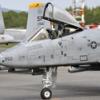

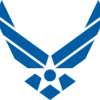
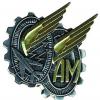



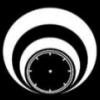


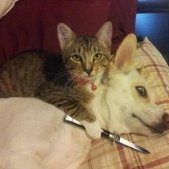
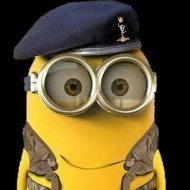
.thumb.jpg.f2698d4ca7fbebe0bd98aef273afd5e1.jpg)
